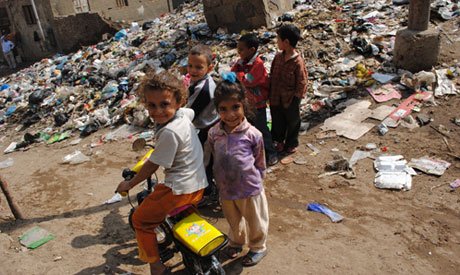Unveiling the Layers of Poverty in Egypt
Cindy Ross just returned from this region after spending a week on the ground witnessing the massive coverage of poverty stricken people. In the heart of a nation steeped in history and culture, there exists a pressing issue that often hides in the shadows: poverty in Egypt. This blog aims to unravel the multifaceted layers of poverty gripping the lives of many Egyptians, shedding light on the challenges they face and the potential pathways to change.
The Complex Tapestry of Egyptian Poverty:
Egypt's rich history is contrasted by a complex tapestry of poverty that affects various facets of its society. From rural villages to urban centers, economic disparities manifest in different ways, creating a narrative that demands attention and understanding.
1. Urban Challenges:
In bustling cities like Cairo and Alexandria, urban poverty is a stark reality. The soaring cost of living, coupled with high unemployment rates, leaves many struggling to make ends meet. Exploring the daily lives of those in urban poverty unveils the intricate balance between tradition and modernity.
2. Rural Realities:
The agricultural backbone of Egypt faces its own set of challenges. Farmers grapple with issues like water scarcity, land distribution, and fluctuating crop prices, perpetuating a cycle of poverty that spans generations. Understanding the rural dynamics is crucial to comprehending the broader scope of poverty in Egypt.
3. Education as a Battleground:
Education serves as both a potential escape from poverty and a battleground where economic disparities are reinforced. Limited access to quality education widens the gap between the privileged and the underprivileged, creating a cycle that is hard to break.
4. Women and Poverty:
Gender plays a significant role in the experience of poverty. Women, especially in rural areas, face unique challenges that require targeted solutions. Empowering women economically becomes not only a social imperative but also an economic one.
The Call for Change:
Addressing poverty in Egypt necessitates a comprehensive approach that spans economic, social, and political realms. Initiatives focused on job creation, education reform, and sustainable agricultural practices can pave the way for lasting change.
1. Economic Empowerment:
Investing in small-scale entrepreneurship and vocational training can provide individuals with the tools to lift themselves out of poverty. Microfinance programs and support for local businesses contribute to economic resilience.
2. Educational Reformation:
Rethinking and reforming the education system ensures that it becomes an equalizer rather than a divider. Accessible, quality education is the cornerstone of breaking the cycle of poverty and fostering societal development.
3. Community Engagement:
Building a sense of community is crucial in the fight against poverty. Local initiatives, community-based organizations, and collaboration with international partners can create a network of support that uplifts the most vulnerable.
As Egypt navigates the challenges of the 21st century, addressing poverty must be a collective effort. By understanding the intricate layers of poverty and implementing targeted, sustainable solutions, Egypt can forge a path towards a more equitable and prosperous future for all its citizens.


